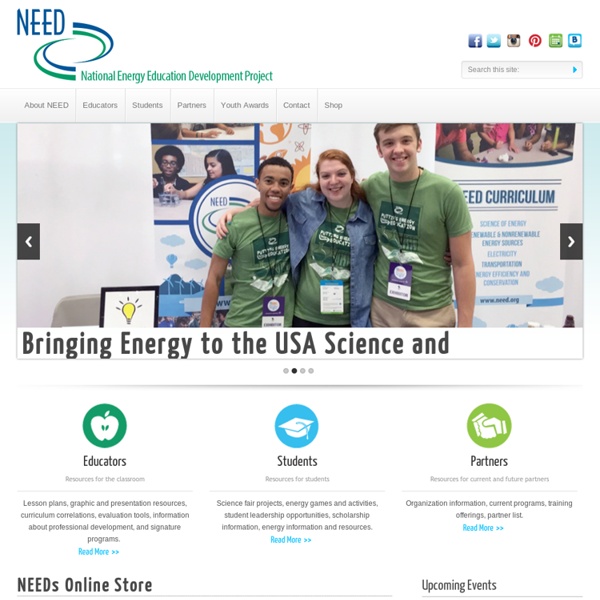



Smarter Science 100kin10 NREL Model Car Comp The National Renewable Energy Laboratory (NREL) hosts car competitions that race solar- and battery-powered model vehicles. Middle School teams from all around Colorado participate in this fun, educational, and exciting event every May. Teams work together building cars with guidance from a parent, teacher, or coach to compete in race and design categories. A "Spirit Award" is also presented to one team recognizing good sportsmanship. Building solar- and battery-powered cars requires skills in both math and science. Model Car Competitions The 2013 Model Car Competitions are complete; see the list of winners. Please check back early next year for information on the 2014 competitions. Sources for Model Car Kits and Accessories From the suppliers listed here, you can order kits containing solar cells modules and electric motors, surplus motors, and gears. Resources How To Build A Junior Solar Sprint Car Step-by-step instructions for building a Junior Solar Sprint model car. Contact
Ask a Tech Teacher Great resources for teachers on grading rubrics, online quizzes, audio books, utilities, puzzle creators and more. Send me an email with any you find invaluable to your teaching job. Partial image: Nemo Developers and/or authors: If you have a website and/or book you would like considered for this list, please contact me so I can review it by clicking here. Thanks! Classroom Resources Apps Flashcards–by Chegg Like this: Like Loading...
PowerSave Schools Program | Alliance to Save Energy Energy efficiency is the easiest, most cost effective way to reduce energy consumption, yet remains a challenge for many school districts. PowerSave Schools reduce consumption an average of 5-15% in one year through no-cost operations and behavior changes! Through the PowerSave Schools program students are empowered to grow as leaders, apply academic knowledge to solve the real-world challenge of increasing utility bills, and move their schools and communities toward a greener future with energy efficiency practices and measurable energy savings. Teachers and Educators, click here for access to our free resources. Energy costs are an enormous expense for U.S. schools--approximately $6 billion each year according to Energy Star-- second only to personnel costs, exceeding the costs of textbooks and supplies. What Schools get out of PowerSave Schools: dollar savings up to 10s of thousands of dollars from no-cost behavior and operations changes. Want to learn more?
Solar Learning Lab™ » Teaching STEM Subjects with Renewable Energy Data Science & Nature Please sign in using one of our supported services to begin saving your favorite programs and videos. We have updated our registration process. Please sign in using one of our supported services to bookmark your favorite programs and videos. If you have a PBS account, your stored favorites and viewing history will be safely migrated. By signing in, you are authorizing PBS to share your email address with your local PBS station to send you periodic communications about station events, services and support. Any other uses of your information by PBS are governed by PBS’s Privacy Policy Warning: Data migration for current PBS account holders is a one time only event.
Girls Who Code - Home The Nature of Water Power | FWEE A Hands-On Science Curriculum for Students The Nature of Water Power is a thematic science unit appropriate for grades six through eight. The science activities in this curriculum are written to the latest science standards. Select activities will engage students in the science process, and encourage scientific thinking, hypothesizing, experimental design, collection, organization and interpretation of the data. I. II. III. IV. V. VI.
Science Links - Grade Specific guest Help | Sign In hcselabs Home guest| Help | Sign In Navigation Other LinksVoicethreadOnline ToolsDigital Citizenship SchoolsHoover City SchoolsBrock's GapBluff ParkDeer ValleyGreen ValleyGreystoneGwinRiverchaseRocky RidgeShades MountainSouth Shades CrestTrace Crossings This is an official website of Hoover City Schools. Actions Turn off "Getting Started" Loading...
Institute for Broadening Participation (IBP): Building Partnerships to Support Diversity in Science, Technology, Engineering and Mathematics (STEM) PBS-Wind Power Lesson Plan This lesson is designed for physical science, earth science, or environmental science classrooms, grades 9-12. Middle school science teachers may also find this lesson helpful. Lesson Objectives By the end of this lesson, students will be able to: Explain the use of wind power as a renewable resource. Physical Sciences Standard 9: Understands the sources and properties of energy Standard 10: Understands forces and motion Level IV, Benchmark 1 Knows that magnetic forces are very closely related to electric forces and can be thought of as different aspects of a single electromagnetic force (moving electric charges produce magnetic forces and moving magnets produce electric forces); the interplay of these forces is the basis for electric motors, generators, radio, television, and many other modern technologies Nature of Science Standard 12: Understands the nature of scientific inquiry Standard 13: Understands the scientific enterprise Estimated Time to Complete Lesson Materials Needed 1.
cooltoolsforschools - home